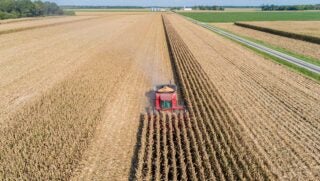Bovine viral diarrhea virus is a coat of many colors. As Dr. Stephen Foulke, professional service veterinarian with Boehringer Ingelheim points out, we may call it bovine viral diarrhea virus, or BVDV for short, but diarrhea is probably one of the least common symptoms when it comes to the disease.
“The biggest thing a lot of people forget with BVD is when you are exposed, even if you don’t break with one of these big diseases, it’s immunosuppressive,” Foulke said. “It actually suppresses the immune system opening up the door for every other disease out there. You may not see a break with BVD itself but you may be getting a lot of other illnesses, decreased weight gains, decreased reproductions just from the effect of this, that is not direct, but of the immune system shutting down.”
We had the opportunity to chat with Foulke recently at the National Cattlemen’s Beef Association Convention and Trade Show about one particular strain of BVDV that keeps popping up, Type 1b.
“Over the last 20 years we have actually had a shift from the BVD 1a virus to the BVD 1b as now the most prevalent virus,” Foulke said. “They are finding not just in the respiratory form, but even on the reproductive side.”
Foulke said most producers are very familiar with the respiratory form of the disease — causing pneumonia, knocking back the respiratory apparatus, and allowing for secondary bacteria to come in and cause real damage. BVD Type 1b has a reproductive form as well. It can cause early embryonic death, abortions, and congenital defects as well as cause the animal in utero to become a persistently infected carrier.
“If the virus is there during that phase, the animal thinks the virus is part of its normal self and will mount no immunity against it,” Foulke said. “So, the virus lives in the animal, just replicating and spreading everywhere once it is born for the rest of its life.”
What’s causing the prevalence of 1b? Foulke said most vaccines probably had 1a in them over the years and thus did a good job of pushing back against that strain.
“Whenever Mother Nature sees one of her things being pushed back, well guess what, someone comes to fill the void so now we are seeing more of the 1bs are more prevalent,” Foulke said.
It’s important for producers to make sure their vaccines cover 1b as well as cover the 1a and 2a strains. Foulke said that’s why Boehringer Ingelheim’s Pyramid and Express lines have been tested on cattle out in the field to ensure they cover all strains.
And while BVDV does not change or mutate as fast as the human flu virus, Foulke said it is important to keep up with cattle vaccinations as immunity will wane after a year.
“If you don’t vaccinate, what we tend to see is you get away with it for a little while but remember that immunity is waning and once it gets below a certain threshold or the exposure gets big enough, it’s going to come right back and then you are totally unprotected,” Foulke said.



